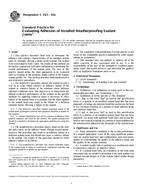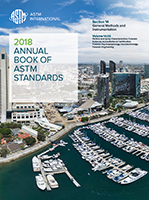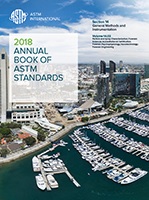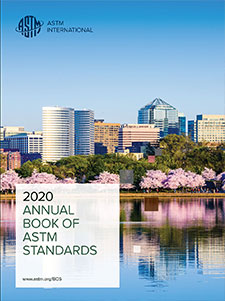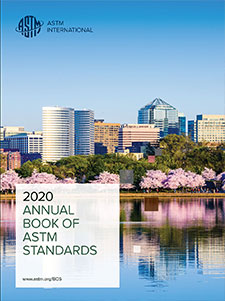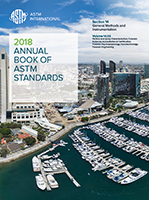Description
1.1 This practice describes field tests to determine the adhesive and cohesive characteristics of an installed sealant joint, by manually placing a strain on the sealant. The sealant to be tested shall be fully cured. The results of this method can be used in conjunction with other information to determine the overall performance of the sealant joint. The user of this practice should define the other parameters to be evaluated such as cleaning of the substrate, depth control of the sealant, sealant profile, etc. This method describes both nondestructive and destructive procedures.
1.2 The destructive procedure stresses the sealant in such a way as to cause either cohesive or adhesive failure of the sealant or cohesive failure of the substrate where deficient substrate conditions exist. The objective is to characterize the adhesive/cohesive performance of the sealant on the specific substrate by applying whatever strain is necessary to effect failure of the sealant bead. It is possible that the strain applied to the sealant bead may result in the failure of a deficient substrate before effecting a failure in the sealant.
Note 1 – The destructive procedure requires immediate repair of the sealant bead. Appropriate materials and equipment should be available for this purpose.
Note 2 – Sealant formulations may fail in cohesion or adhesion when properly installed, and tested by this method. The sealant manufacturer should be consulted to determine the appropriate guidelines for using this method.
1.3 The nondestructive procedure places strain on the sealant and a stress on the adhesive bond. Though termed nondestructive, this procedure may result in an adhesive failure of the deficient sealant bead, but should not cause a cohesive failure in the sealant. The results of this procedure should be either adhesive failure or no failure.
Note 3 – The nondestructive procedure may require immediate repair of the sealant bead, if failure is experienced. Appropriate materials and equipment should be available for this purpose.
1.4 The committee with jurisdiction over this practice is not aware of any comparable practices published by other organizations or committees.
1.5 This standard does not purport to address all of the safety concerns, if any, associated with its use. It is the responsibility of the user of this standard to establish appropriate safety and health practices and determine the applicability of regulatory limitations prior to use.
Product Details
- Published:
- 05/10/2002
- Number of Pages:
- 6
- File Size:
- 1 file , 270 KB

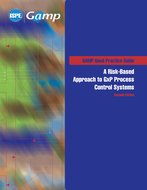 GAMP Good Practice Guide: A Risk-Based Approach to GxP Process Control
GAMP Good Practice Guide: A Risk-Based Approach to GxP Process Control 